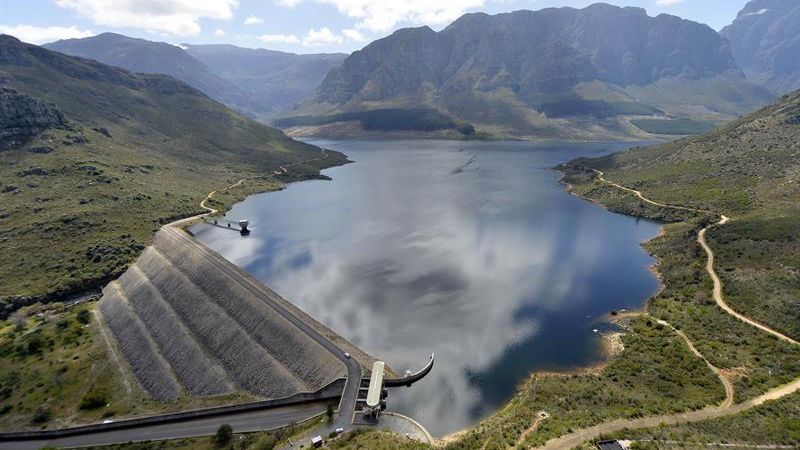This past weekend’s rainfall has brought a huge relief to residents and reservoirs in what has been another dry start to Cape Town’s winter.
According to the City of Cape Town’s latest dam levels report (pdf), the city’s reservoirs are now more than 50% full, up 1.5% from the previous week.
No ad to show here.
The Theewaterskloof Dam’s storage increased by 1.7%, and now holds 41.8% of its designed capacity. It’s low, sure, but a far cry from 2017 when it held just 18.4%.
The Voëlvlei Dam holds 56.8% of its capacity this week, up from 55% logged in the previous report.
The Wemmershoek Dam increased its stored amount by just 0.2%; odd, considering that more than 40mm of rain was recorded within its catchment area this past week.
The Berg River Dam’s storage jumped from 73.5% to 75.9% this past week, while the Steenbras Lower Dam increased slightly to 40.5%.
The Steenbras Upper Dam saw a slight decline from 68.3% to 66%.
Overall, the dams hold 450.9-billion litres as of 24 June 2019, compared to 216.8-billion in 2017 at the height of the drought.
As mentioned earlier, much of these gains are thanks to the rain which fell over the weekend of 21 June. However, as of 23 June, Newlands, Steenbras, Table Mountain’s Woodhead, the Theewaterskloof, Voëlvlei and Wemmershoek catchment areas have all seen below-average rainfall totals for the month of June.
Notably, dam level depletion is also aided by low residential usage. Just 508-million litres of water per day were drawn from the Cape’s six largest dams, and 534-million litres per day in total including the City’s 14 monitored dams. This is some 120-million litres within the City’s target of 650-million litres.
Feature image: The Wemmershoek Dam in September 2018, by City of Cape Town
